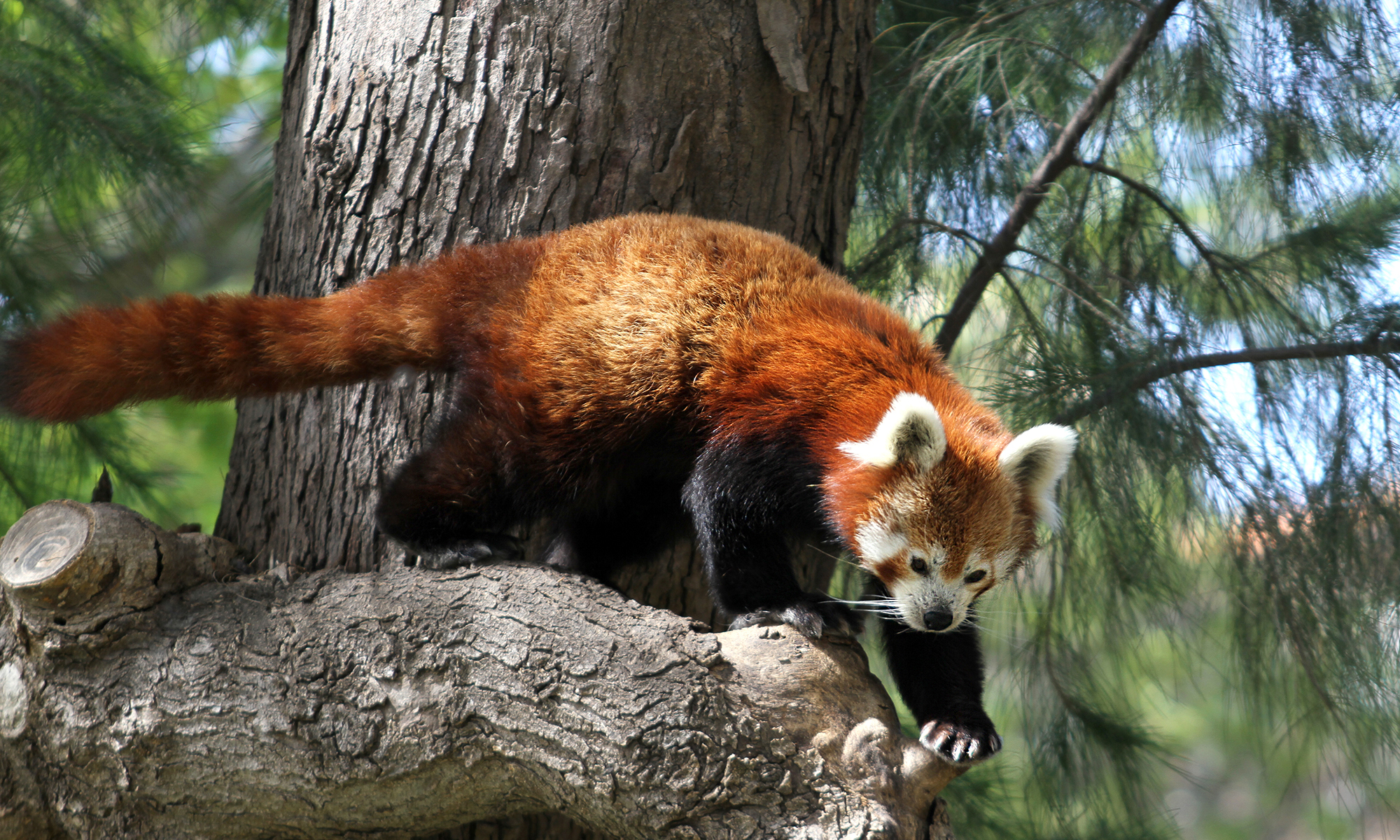Name: Red Panda
Taxonomy: Ailurus fulgens
Sub-species: Ailurus fulgens fulgens, and Ailurus fulgens stanyi (though recent research suggests they may actually be different species, separated 220,000 years ago)
Class: Mammal
Order: Carnivore (though considered vegetarian due to a 2% meat diet)
A Red Panda’s beautiful colouration is down to their need to camouflage into the trees. The red matches a tree moss in most locations in the forests, whilst the dark brown underside is to prevent them from being seen from below.
Whilst sleeping through the night and day, Red Pandas are most active during the dawn and dusk of each day. In this time they are nimble and quick through the trees thanks to their amazing ringed tails for balance, and their unique “fake-thumb”, where a toe on each paw has a extra bone, allowing them to grip, and climb down trees face first.

Whilst an omnivore, a Red Pandas diet is 95% vegetarian, and this is met by a single Red Panda consuming 20,000 bamboo leaves every single day! The other 5% is made up by flowers, insects and small birds.
Red Pandas have many names within local cultures, including the Firefox, Golden Cat, Shining Cat, and Lesser Panda – but there’s nothing less about these guys! Each language tends to have a name for them.

Red Pandas spend most of their lives high in the branches of forests, only coming down to their dens. The rest of the time they eat, sleep, and travel through the trees trying to find the freshest bamboo. They are also solitary animals and quite territorial, only meeting up with other Pandas during their mating season.
Red Pandas are an umbrella species. As well as being at risk themselves, there are many species that depend on them for their own survival, including Macacs, and the critically endangered Pangolin.
Red Pandas have been absorbed into pop culture in recent years, including the naming inspiration of the Mozilla Firefox browser, and popular Sanrio Character and Netflix Anime Aggretsuko!


